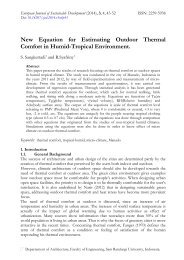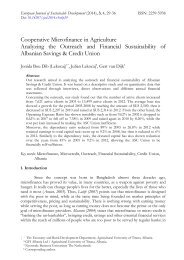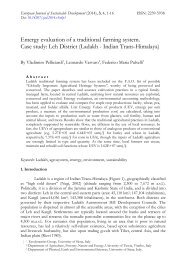An Ecopsychological Perspective on Sustainability: The BlindSpot
As the 2015 deadline for the United Nation’s Millennium Development Goals (MDGs) approaches many of the goals and objectives for education, the development agenda and sustainability have not and will not be met.This suggests something is not working – there is a blind spot.The inability to achieve sustainability is based upon much deeper human narratives and behaviors that drive destructive practices: gender exclusion and violence toward women areamong these two core drivers. An ecopsychological education aims to exposeandtransform deeply rooted unconscious narratives that underlie human practices, policies, and decisionsabout how we respond toour world in both creative and destructive ways. Key words: ecopsychology, pedagogy, sustainability, gender, sustainable development, ecology, psychology, narrative
As the 2015 deadline for the United Nation’s Millennium Development Goals (MDGs) approaches many of the goals and objectives for education, the development agenda and
sustainability have not and will not be met.This suggests something is not working – there is a blind spot.The inability to achieve sustainability is based upon much deeper human
narratives and behaviors that drive destructive practices: gender exclusion and violence toward women areamong these two core drivers. An ecopsychological education aims to exposeandtransform deeply rooted unconscious narratives that underlie human practices, policies, and decisionsabout how we respond toour world in both creative and destructive
ways.
Key words: ecopsychology, pedagogy, sustainability, gender, sustainable development, ecology, psychology, narrative
You also want an ePaper? Increase the reach of your titles
YUMPU automatically turns print PDFs into web optimized ePapers that Google loves.
40 European Journal of Sustainable Development (2014), 3, 4, 37-42<br />
that 70 per cent of trafficked women end up in the sex trade(WomenStats Project,<br />
2011d);<br />
• Countries in which 0 to <strong>on</strong>ly 10 per cent of parliament is composed of women<br />
include China, Japan and Brazil. Research has found that achieving a critical mass of <strong>on</strong>ethird<br />
of women in government can help societies move bey<strong>on</strong>d gender-centric issues.<br />
(WomenStats Project, 2010b)<br />
Some of the most sobering statistics show that there is no country or nati<strong>on</strong> where<br />
women are physically secure (WomenStats Project, 2011e). Research has also shown “the<br />
best predictor of a state’s peacefulness is its level of violence against women. Even<br />
am<strong>on</strong>g democracies,those with poor physical security for women are less peaceful than<br />
democracies with good physical security for women (Huds<strong>on</strong> et al, 2012, p. 205; Carter,<br />
2014).<br />
In 1997, UNIFEM estimated that the m<strong>on</strong>etary value ofthe unpaid labor of women<br />
translated into around 40% of the world’s gross product (WGP) (Huds<strong>on</strong> et al, 2014,<br />
p.14).It is hard to believe that half the populati<strong>on</strong> has been left out of the<br />
officialcalculati<strong>on</strong> of GNP. In her opening speech at the World Ec<strong>on</strong>omic<br />
Forum,Christine Lagardeemphasized str<strong>on</strong>ger inclusi<strong>on</strong>, and a shared ec<strong>on</strong>omic<br />
prosperity when she stated:<br />
“All studies point to the ec<strong>on</strong>omic benefits of full female participati<strong>on</strong> in the labor force,<br />
in the ec<strong>on</strong>omy, in society. One recent study estimates that by simply raising women’s<br />
employment rates to the level of men, GDP would jump significantly - by 5 percent in<br />
the United States, 9 percent in Japan, 10 percent in South Africa, 27 percent in India, and<br />
34 percent in Egypt.” (2013)<br />
This is not a promoti<strong>on</strong> of unsustainable growth, but rather it is a promoti<strong>on</strong> of equity in<br />
ec<strong>on</strong>omic value. It is now widely acknowledgedthat the exclusi<strong>on</strong> of women’s labor,<br />
violence toward women, and barring womenfrom participati<strong>on</strong>in decisi<strong>on</strong> making<br />
processes are detrimental to the ec<strong>on</strong>omic, envir<strong>on</strong>mental and social systems. Yet, laws<br />
and policies are still in place around the world that hold these practices in place.<br />
<strong>The</strong> questi<strong>on</strong>s seem obvious: Why are we not insisting <strong>on</strong> an end to violence toward<br />
women and girls around the world Why c<strong>on</strong>tinue to fund countries, nati<strong>on</strong>s, policies,<br />
and strategies that not <strong>on</strong>ly exclude women, but c<strong>on</strong>sciously or unc<strong>on</strong>sciously perpetuate<br />
violence toward them How might these practices be finding cover under a sustainable<br />
development umbrella<br />
C<strong>on</strong>clusi<strong>on</strong>s<br />
If there are no ethical c<strong>on</strong>siderati<strong>on</strong>s within sustainable development, then<br />
deeper problems are easily camouflaged with “engaging rhetoric or superficial<br />
agreements” (Rolst<strong>on</strong>, 2012, p. 37). Development that reduces equality, exchange and<br />
distributi<strong>on</strong> of resources, plurality, ec<strong>on</strong>omic fairness, biodiversity, and enables violence<br />
toward women is what Vedana Shiva calls “maldevelopment” (1989, p.5).<br />
Published by ECSDEV, Via deiFiori, 34, 00172, Rome, Italy<br />
http://ecsdev.org











